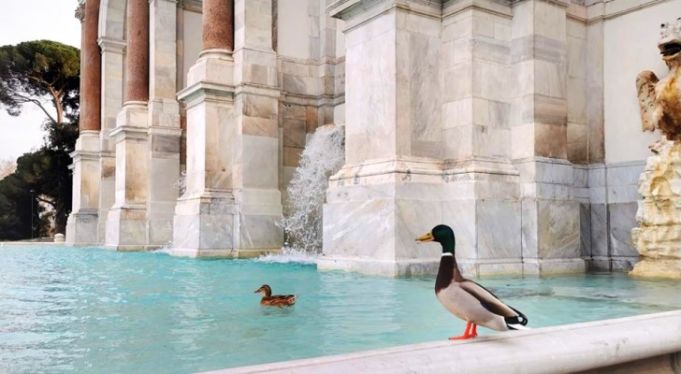Birds and animals reclaim Palatine Hill for themselves during Rome's lockdown.
Animals and birds living on Rome's Palatine Hill are taking advantage of the lack of tourists to "take back" the hill for themselves, reports Italian newspaper La Repubblica.
The creatures live in the wildest, most undisturbed area of the Palatine, which is part of the Colosseum archaeological park, however they tend to stay hidden during the day.
Not anymore though. The wild animals, including foxes, porcupines, rabbits and hedgehogs, can now be seen pottering around in daylight among the ancient Roman ruins.
"They are present all year round, here they find a protected environment because no pesticides or herbicides are used, but only organic products with low environmental impact" - Gabriella Strano, the park's landscape architect told La Repubblica - "Generally, during the day they remain hidden out of fear but now they are back to reclaim their space."
Some of the more colourful birds include pheasants, parakeets, woodpeckers and mallards, while the hill is also home to 60,000 bees which make organic wildflower honey.

In recent weeks, Rome has seen an increasing number of ducks returning to its fountains, from the Barcaccia in Piazza di Spagna to the Fontanone on the Gianicolo, whose crowds of tourists have disappeared.
There is even a video of a mother duck with nine ducklings in tow waddling along the pavement on Lungotevere Aventino.
During Italy's lockdown, due to the Coronavirus, animals have made a return to deserted cities, emboldened by the lack of people and traffic.In Rome there are growing cases of cinghiali or wild boar appearing on streets in the city suburbs, while further afield people have seen swans and cormorants in the canals of Venice, dolphins in the Sardinian port of Cagliari and - best of all - a badger barrelling down a street in the centre of Florence.
General Info
View on Map
Wild animals roam free among Roman ruins
Palatine Hill, 00186 Rome, Metropolitan City of Rome, Italy


















